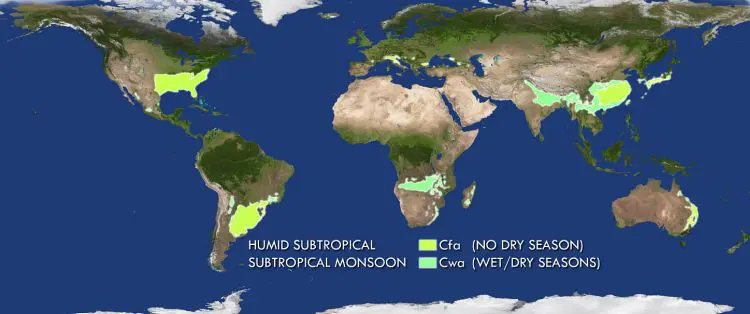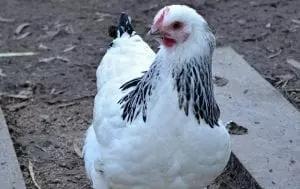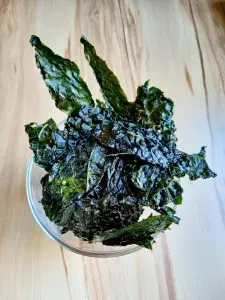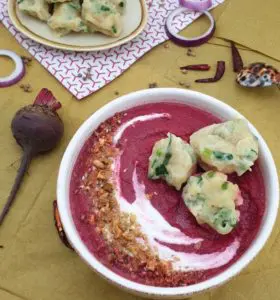Welcome to winter in the humid subtropics- all three weeks of it. Okay that’s a local joke where I live (Brisbane, Australia), but it’s not far from the truth. The subtropics give us a specialised climate- one unlike any other. Most gardening information found online and in books is written for cool or temperate climates, and we are often left out.
This, our first subtropical seasonal planting guide, will be useful for beginner and intermediate gardeners alike. It’ll help you know what to plant when, what conditions to expect, & what you can grow all year round. It will be useful every year, so make sure to bookmark it for future reference.
What is a Subtropical Climate Zone?
The humid subtropical climate is characterised by warm, wet summers and dry, mild winters. During summer we experience temperatures in the 30 °C to 38 °C (86 °F to 100 °F) range with high humidity & warm, oppressive nights. Much of the rainfall comes from thunderstorm activity and tropical lows, which are sometimes enhanced by weakening tropical cyclones. Winters are mild (5–12 °C overnight [41–54 °F]), and typically frost-free, although there will always be small pockets and micro-climates where frost may occur.

Winter is our main growing season in subtropical Australia, which encompasses south-east Queensland, parts of Northern New South Wales and parts of northern Queensland. But we’re not the only country with subtropical zones. Subtropical climates are found on the eastern sides of most continents between 20° and 35° north and south latitude. Southern areas of the USA, southern areas of Africa, pockets of Asia, parts of Europe and south America experience subtropical climate conditions too. Orlando (Florida, USA), Brisbane (Australia) and Sao Paolo (Brazil) have very similar humid subtropical climates.
What is The Subtropical Climate like for Gardening?
While it’s true that living in a subtropical climate is pretty great, there is no perfect climate for gardening. We are lucky to have warm, mild weather, and to be able to grow food all year round, but in fact subtropical conditions can be a little deceptive. The seasons are not clearly defined. We have a very short autumn and a very short spring. Rainfall can be excessive in summer. We don’t have 4 seasons of equal length. The pest pressure can be intense, sudden, and occur when we least expect it. Successful vegetable gardening in these conditions comes from good preparation and understanding your growing environment.

Just because we can grow year-round doesn’t mean that we can grow anything at any time. Our seasons don’t follow what the calendar says-they are irregular and quite different to the typical temperate climate which has 4 seasons of equal length. Because of this, many crops only have short periods of time (let’s call them timeslots), where they will thrive. Learning to pick those timeslots is the tricky part of subtropical veggie gardening. If you don’t get the timeslots right, crops will either not grow, grow poorly, or suffer serious pest damage.
For example, the calendar says that spring in Australia starts on September 1. However, experience tells those of us in seQLD that spring weather may start anywhere from mid-July until mid-August and only last a few weeks before we have a strong ‘blast of summer’ sometime in September. These few weeks are your timeslot for cucumbers and strawberries to thrive before the pests appear in big numbers. If you learn to pay close attention to the weather, you can pick up the clues to when the season is changing. This will enable you to quickly take action in the garden. Knowing what is going to happen when gives you more control over your garden & a much better chance of success.
When Should I Sow My Winter Seeds?
There is no one correct answer to this question!
Autumn is normally when winter seeds should be sown; but in the subtropics, autumn is a shortened season. I like to call it a ‘shoulder season’. We have about 3 weeks of this temperate climate weather- not the 3 months that the calendar says. So we need to plant more by the weather than the calendar. We don’t have the luxury of forgetting the garden for a couple of weeks then checking the calendar: you can completely miss that shoulder season!
While we know that weather is the main variable to be taken into account, we need to remember that it changes every year & observe it closely so we can time our plantings accurately. The end of summer usually sees high rainfall and humidity which don’t suit the slower-growing winter veg. While the temperatures might drop a little during this period (February-March in Australia, August-September in USA), it’s essentially still unpredictable summery weather and the pest pressure remains high. Rainfall may persist into autumn and play havoc with our garden plans.
Microclimate too (a small area whose climate differs from that surrounding it) can make your growing conditions differ from the norm. You might have cool shade along one side of the house or be on a corner block that gets a lot of wind. I know a lady 2 suburbs away from me who gets frosts because her street is low-lying. Learning to manage your individual growing environment is an integral part of growing success.
I Live in seQLD, What Should I Sow Now?
Those veggies that will be sown in punnets or trays can go in now (early March 2022 in Australia). This includes brassicas, pumpkin, radishes, lettuces, endive, chicory, celery, Asian greens, tomatoes, traditional leafy greens, short-day onions, leeks, beetroot, & herbs. Getting those large tomato varieties sown now will give them a chance to develop big enough fruit so you can get a crop in before growth starts to slow down in May. You may have to protect your seedling trays from direct sun and heavy rain, but it’s worth it to get that head start. Many winter crops are slow-growing and will thank you for that extra few weeks at the start of the season.
Crops that are to be sown direct need to wait until the weather cools down. And by that I mean, once the humidity has gone, the rainfall has stabilised, and the air feels cooler. Beetroot, carrots, snow peas, garlic and potatoes are best left another month or so.
Crops that need to wait for cool weather (usually early April) include carrots, garlic, and potatoes. Carrots need to be sown direct, and can fail to germinate or bolt to seed if planted too early. Garlic requires a cold start, and will benefit from pre-chilling in the fridge prior to planting. Make sure you choose a soft-neck garlic variety like glenlarge which is daylength-neutral. Potatoes prefer a temperate climate and can easily rot in the ground from excessive rain. (Check out our comprehensive guide to subtropical potato growing for more details). Wait until the summer rainfall has finished and the temperatures are cooler before planting these three- this is usually from mid-March to mid-April.
What to avoid growing in winter. While you can grow most veggies year-round in the subtropics, you’ll get better results if you plant veggies in their preferred conditions. Extending your growing seasons out might be something you do as you become more experienced. Once you understand your microclimate & get things like soil, water, and pest control down pat, your abilities and results will improve year after year. Crops that are best suited to summer include corn, rosella, red amaranth, malabar spinach, ginger, kang kong, eggplant, okra and melons.
Crops that prefer the temperate shoulder season weather are cucumber, zucchini, beans, strawberries and large-sized tomatoes. These are the trickiest edibles to grow in the subtropics, as winter is a bit cold for them and summer too humid, rainy and pest-ridden. This is not to say that you can’t grow these veggies outside of autumn or spring-you can. But they’ll produce better, need less maintenance and suffer less pest damage in their ideal climate. You may be able to skew your microclimate & growing conditions so that they do better in your individual yard- for example, I can grow zucchini right through winter in Brisbane by planting them in metal pots against a metal fence in a full sun position. Yet if I put them in the ground in my backyard where they get part shade, they wither and die.
Edibles you can grow all year round in the subtropics include sweet potato, selected spinaches, pumpkin, chives and other herbs, bunching onions and radishes. Some summer favourites can be ‘over-wintered’, including chillies, eggplant and capsicum. This means they’ll survive through winter but not fruit again until the weather is warmer. Once the temperatures drop you can cut them back and rest them until they sprout new growth in spring.

What to start with if you’re a beginner. The easiest veggies to grow are leafy greens, followed by root crops, then fruiters. So greens like lettuce, kale, traditional spinaches and bok choy are quick and easy. Root crops such as beetroot, radishes shouldn’t give any trouble during winter, and cherry varieties are the easiest of the tomatoes. You can check out our complete guide to starting a vegetable garden for more detail. Hybrid (also called F1) seeds of any vegetable are good for beginners because they tend to be more pest resistant and uniform producers. You won’t be able to save the seed from hybrids, but their high success rate gives new gardeners an encouraging start.
If you’re up for a challenge, try potatoes, rhubarb, celery, garlic, large tomatoes and artichokes. These are fantastic crops to grow at home but do take a bit of dedication. For example, celery is super-hungry and thirsty. Rhubarb likes a colder winter than we experience, as does garlic. Large tomatoes can be pest-prone, and artichokes can be fussy and slow to start.
Succession Planting
Succession planting is is how you keep a steady flow of produce coming out of your garden all season. As the name suggests, it means sowing seed every few weeks so that you can enjoy a continual harvest from your garden without being overwhelmed by too much at once. The average family needs four to six plants of any single vegetable, so sowing enough seed to generate 4-6 viable plants every 3 or 4 weeks will guarantee a steady supply.

As our enthusiasm grows so do our gardens, and writing notes in a garden diary is a great way to keep track of your plantings. Many gardeners use calendar events as a time guide. For example, plant garlic by ANZAC day or sow the last potatoes on the Ekka holiday. Planting by the lunar calendar and using the suggested sowing dates is one way I have remembered to get successive batches of seeds sown. The lunar calendar gives you a window of time each month to get your seeds in, and is alleged to improve germination rates & overall plant strength. You can purchase physical lunar calendars like the one shown above or simply look one up online. While the jury is still out on its validity, my own unscientific observations so far suggest that it works. I look forward to further testing the lunar calendar in 2022!
How Do I Know Where to Plant Everything?
If you’re new to vegetable gardening, pay close attention to the spacings and heights specified on your seed packets. Some vegetables can grow to be enormous! Be sure to place plants in accordance with aspect and size at maturity: you don’t want to have tall bushy plants shading out small ones.

Think about pollinators, too. Place a few bee magnet herbs and/or flowers strategically so they can be seen and accessed easily by insects. If you have the space, it doesn’t hurt to let a few veggies go to seed. Not only will you be able to save the seed for future crops, but beneficial insects will be drawn into your garden.
General Winter Garden Tasks & Pest Control
If you’ve prepared your soil adequately, there shouldn’t be any major tasks to complete during the season. It’s more a question of ongoing observation and minor maintenance. Look after or cover any beds not in use. Keep up with weeding (easier to do while their growth is slow), and top up mulch where necessary.

Always observe your crops while you’re watering. This gives you a chance to examine plants closely for pest damage and growing issues. If they need some fertiliser, a liquid feed such as those from plant doctor is best during the growth stage as it takes effect more quickly than solid fertiliser. If you have weeds at home (and who doesn’t!) or chickens, you can make your own liquid fertiliser at home. Simply mix chicken manure with water and rest it for an hour before use. To make a weed tea, steep weeds in water for a month before straining and using on the garden. Be mindful that these home-made fertilisers will be very high in nitrogen whereas a commercial product has a balanced nutrient ratio.
Pests & Diseases
If your soil is well-prepared & you are growing veggies in their ideal season, you shouldn’t have too much trouble during the subtropical winter. Grasshoppers disappear, fruit fly are inactive, army worms and white butterflies are gone.

At the same time, backyards are as individual as people, so there will always be some gardeners experiencing pest damage. While you shouldn’t need to net or cover your beds during the cooler months, attacks by larger pests may make it a necessity. Birds, possums and rats tend to be the main culprits and can be hard to control. There are a variety of organic ways to control pests in the garden which we recommend trying.
And that’s it for our subtropical winter planting guide 2022! We hope you find it useful. Comment below if you have any questions. Happy vegetable gardening!













